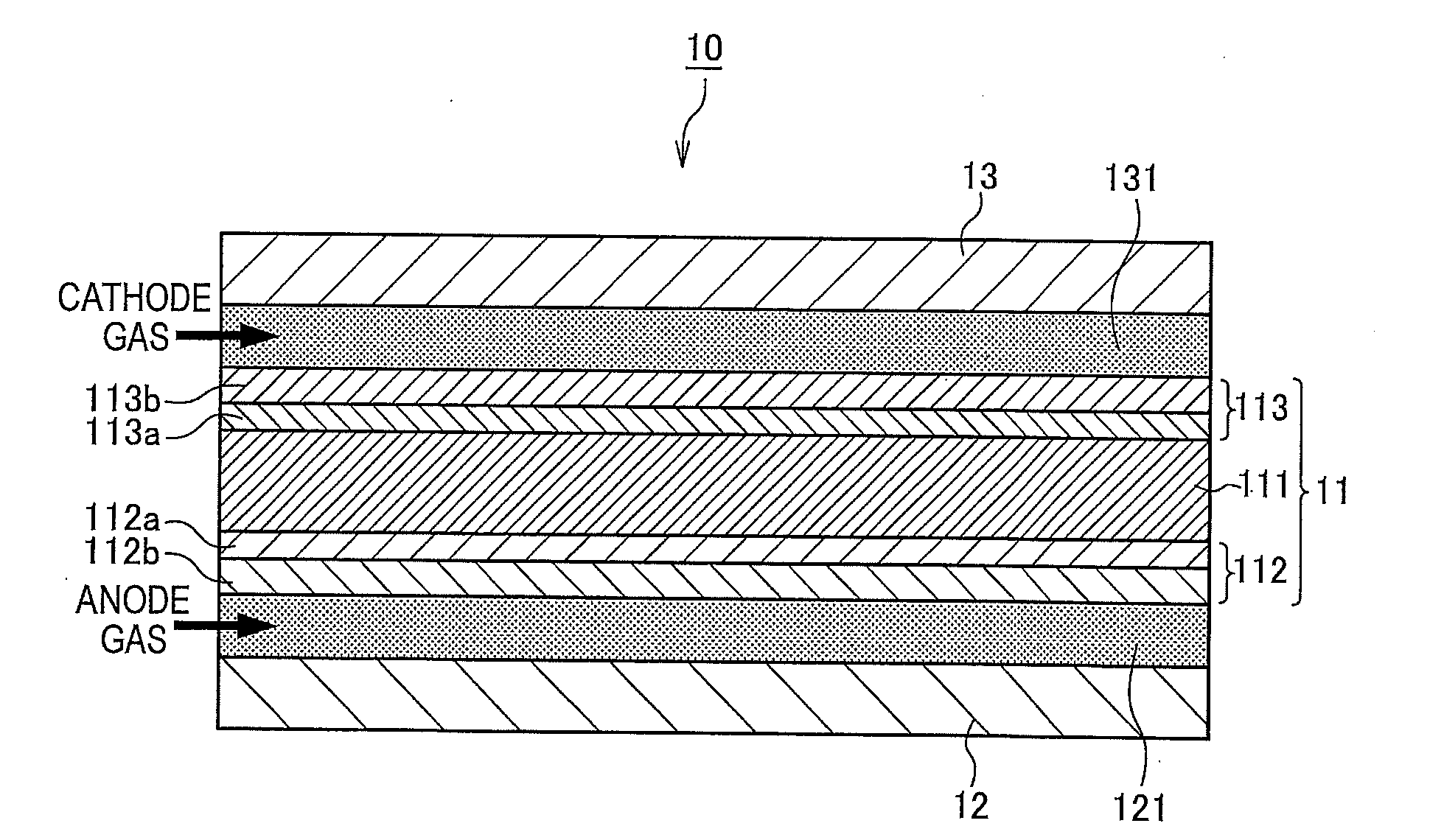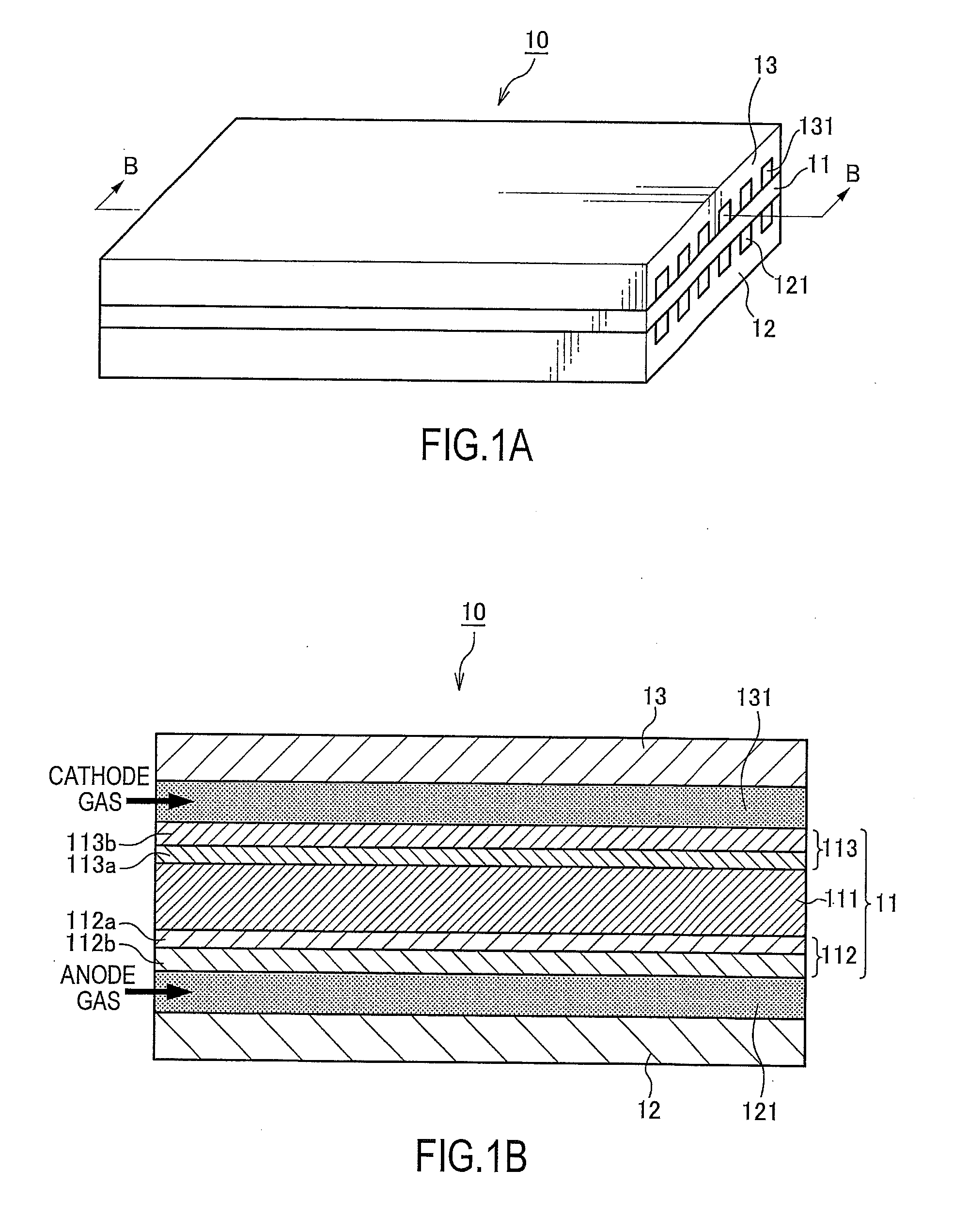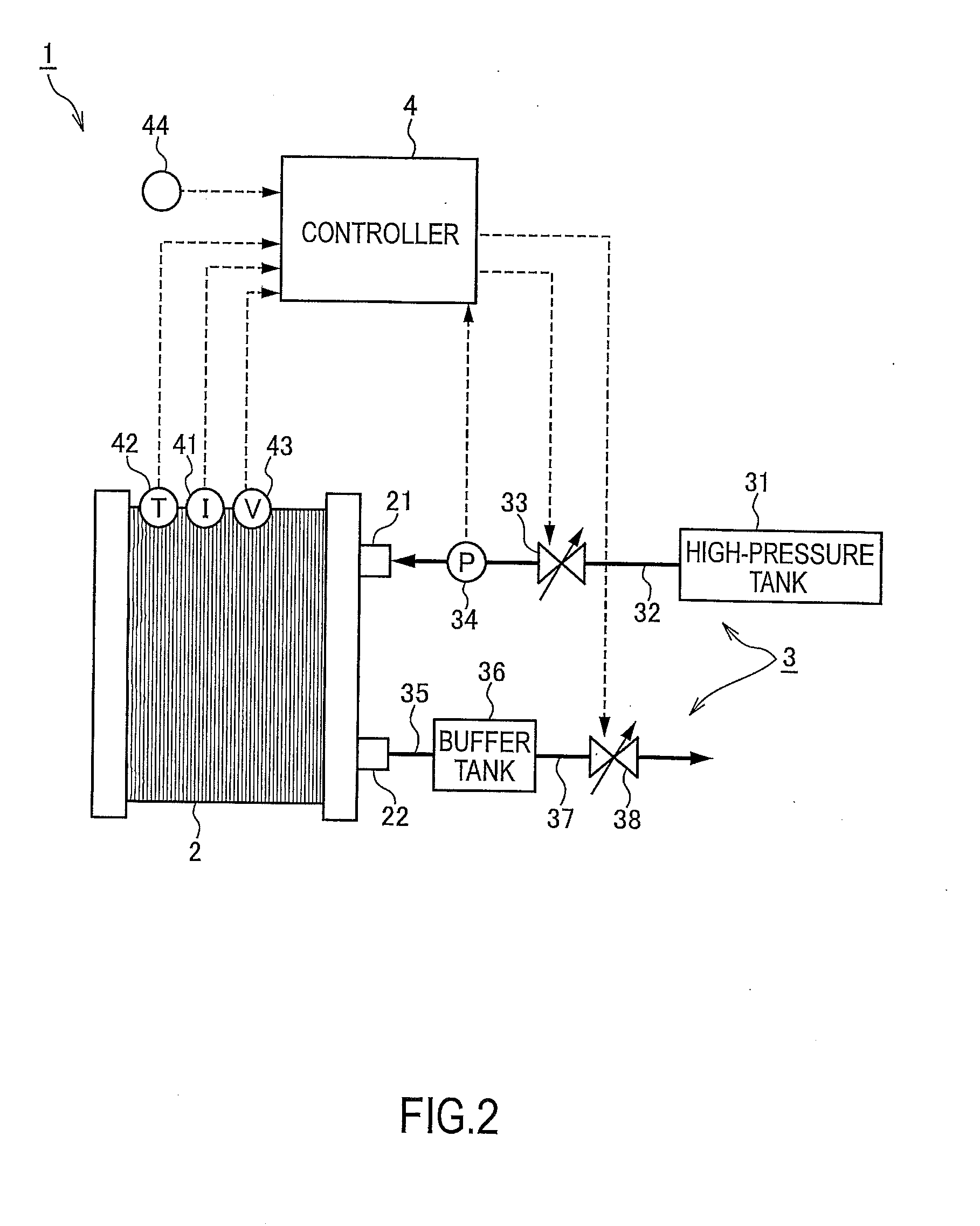Fuel cell system
- Summary
- Abstract
- Description
- Claims
- Application Information
AI Technical Summary
Benefits of technology
Problems solved by technology
Method used
Image
Examples
first embodiment
[0025]A fuel cell includes an electrolyte membrane interposed between an anode electrode (fuel electrode) and a cathode electrode (oxidant electrode), and generates power by supplying anode gas (fuel gas) containing hydrogen to the anode electrode and cathode gas (oxidant gas) containing oxygen to the cathode electrode. The following electrode reactions proceed in the anode electrode and the cathode electrode.
Anode Electrode: 2H2→4H++4e− (1)
Cathode Electrode: 4H++4e−+O2→2H2O (2)
[0026]The fuel cell generates an electromotive force of approximately one volt by these electrode reactions (1) and (2).
[0027]FIGS. 1A and 1B are explanatory diagrams showing a configuration of a fuel cell 10 according to a first embodiment of the present invention. FIG. 1A is a schematic perspective view of the fuel cell 10. FIG. 1B is a cross-sectional view of the fuel cell 10 shown in FIG. 1A taken along the line B-B.
[0028]The fuel cell 10 is configured such that an anode separator 12 and a cathode separ...
second embodiment
[0102]A description is now given of a second embodiment of the present invention. The present embodiment differs from the first embodiment in that a larger criterion value C0 is set for a larger normal anode pressure upper limit value, P. The following description will be given with a focus on this difference. It should be noted that, in the embodiments described below, the elements that are similar to those of the above-described first embodiment in terms of function are given the same reference signs thereas, and redundant descriptions are omitted as appropriate.
[0103]When an instruction for increasing anode pressure is issued during the down transient operation, basically, the normal anode pressure upper limit value, P, is set in accordance with the operating condition of the fuel cell system 1.
[0104]When the down transient operation is re-executed after the anode pressure has been increased to the normal anode pressure upper limit value, P, the larger the normal anode pressure u...
third embodiment
[0110]A description is now given of a third embodiment of the present invention. The present embodiment differs from the first embodiment in that, once the anode pressure has been increased to the anode pressure upper limit value for exhausting the stagnation point, P1, after the down transient operation, the anode pressure is restored to the normal anode pressure upper limit value, P, based on the anode gas concentration in the buffer tank 36. The following description will be given with a focus on this difference.
[0111]As stated earlier, the controller 4 regulates the opening degree of the purge valve 38 in accordance with the operating condition of the fuel cell system 1 so as to control the buffer concentration (the anode gas concentration in the buffer tank 36) Cbuff to be equal to a desired management concentration corresponding to the operating condition of the fuel cell system 1.
[0112]If the buffer concentration Cbuff becomes lower than this management concentration, there i...
PUM
 Login to View More
Login to View More Abstract
Description
Claims
Application Information
 Login to View More
Login to View More - R&D
- Intellectual Property
- Life Sciences
- Materials
- Tech Scout
- Unparalleled Data Quality
- Higher Quality Content
- 60% Fewer Hallucinations
Browse by: Latest US Patents, China's latest patents, Technical Efficacy Thesaurus, Application Domain, Technology Topic, Popular Technical Reports.
© 2025 PatSnap. All rights reserved.Legal|Privacy policy|Modern Slavery Act Transparency Statement|Sitemap|About US| Contact US: help@patsnap.com



